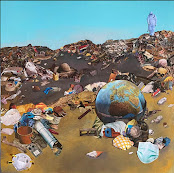DESMA 9 Extra Credit Event 5
Extra Credit Event 5 The event for Biotech + Art was a watch party of the 1997 film Gattaca. The film is set in a time where eugenics are common, where children’s genetic traits are selected for. It follows the hardships of a boy whose parents chose not to follow the widespread practice of choosing their children’s traits. That society holds a ton of value to genetics, and attributes a large part of who a person is to their genetic makeup. Now. While it is true that genetics play an enormous role in our lives, they do not determine our destiny. You could be given a great genetic makeup, and still turn out bad. You could be dealt some crappy genetic cards, and end up happy and successful. It just depends on what you choose to do with what you are given, though it is also dependent on how a society treats and accommodates the “less desirable” traits. After all, in the end, it is the society that chooses what is considered desirable. Who decides what is a good trait and a bad trait,...




